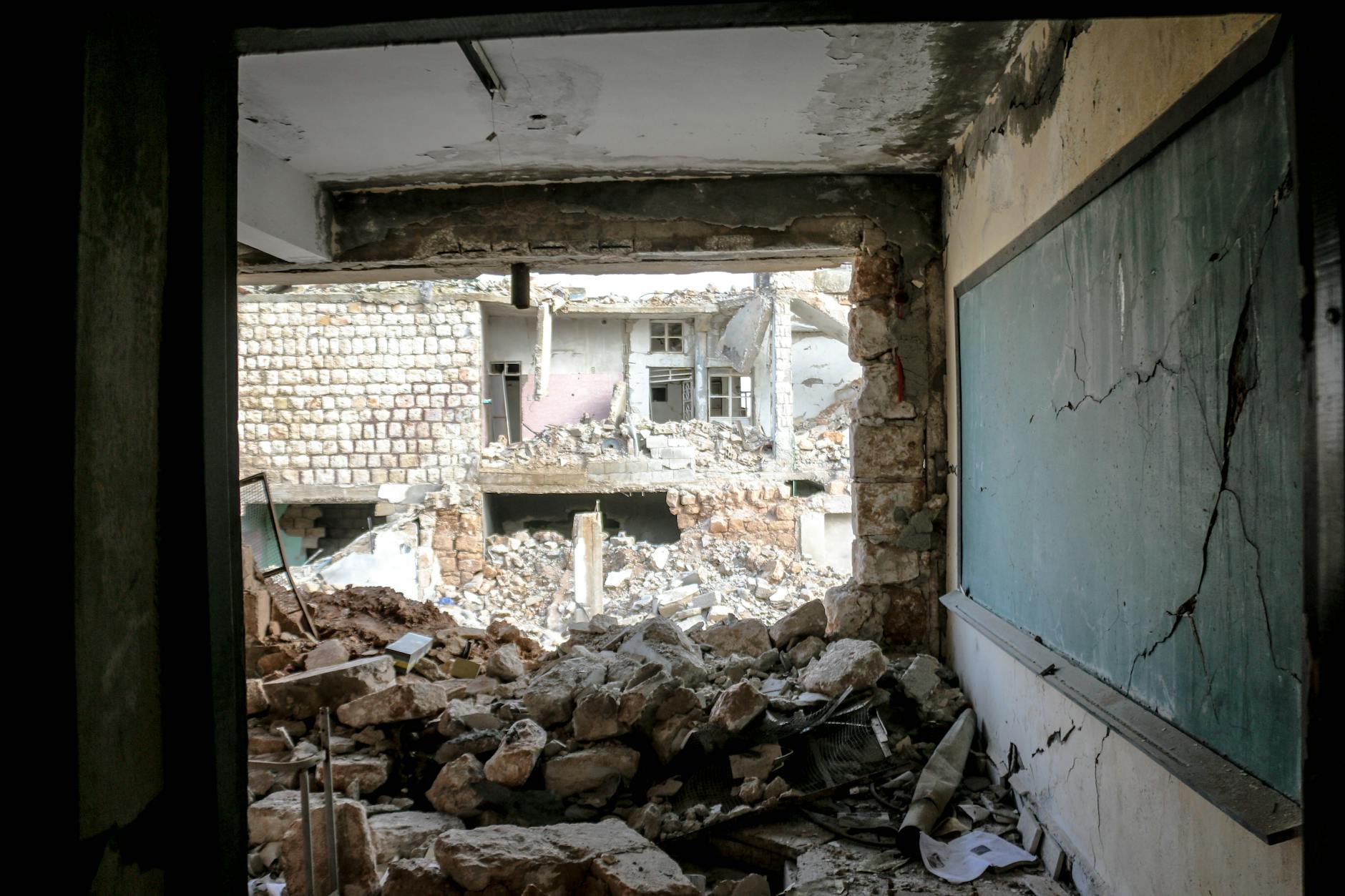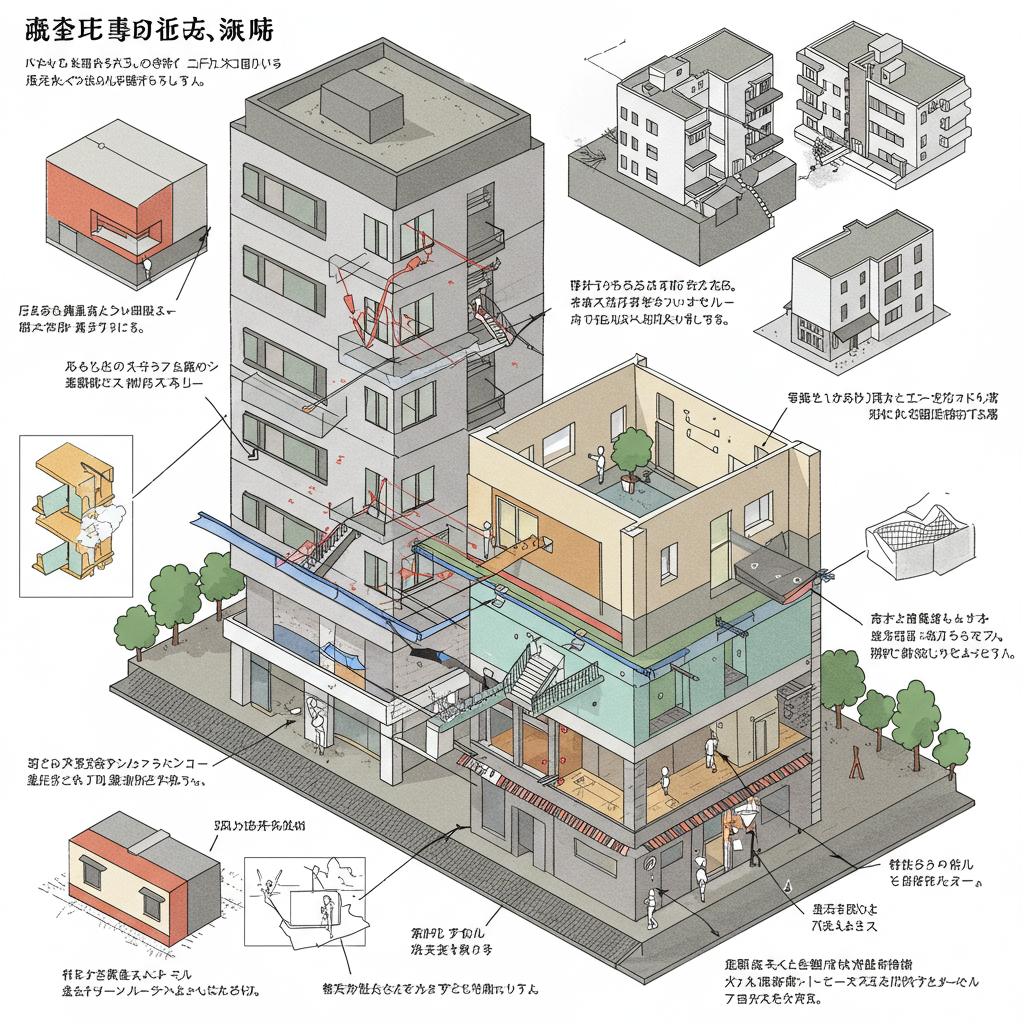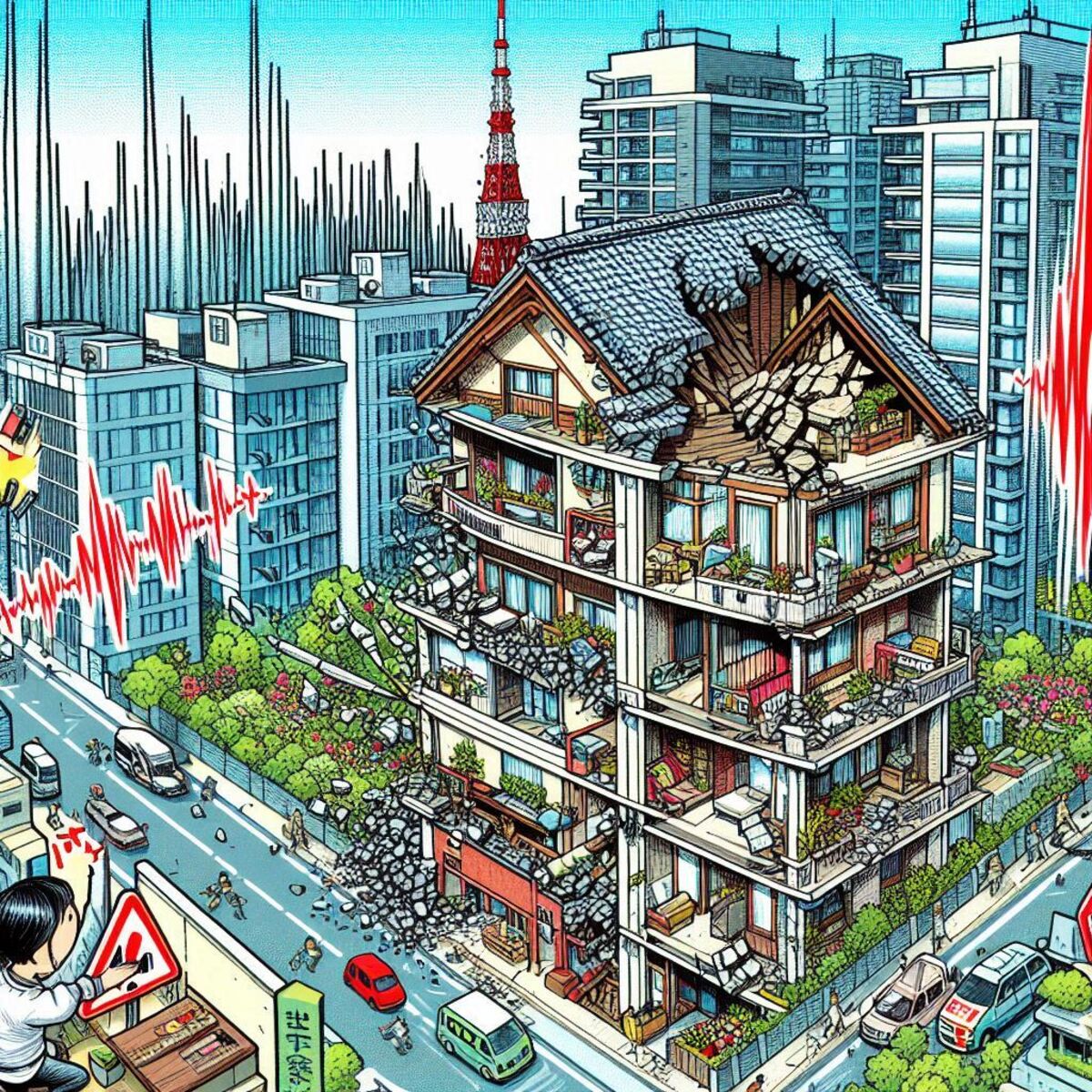Japanese condominiums are gaining global attention—thanks in part to their remarkable seismic resilience, engineered to withstand magnitude 7 earthquakes.
Japan has faced some of the world’s most powerful earthquakes—the 2011 Tōhoku Earthquake, the Great Hanshin Earthquake, and the Kumamoto Earthquake among others. And yet, remarkably, condominium towers constructed under Japan’s post-1981 New Seismic Standards have suffered virtually zero structural collapse. This statistic is not only impressive—it is virtually unmatched globally.
Why are Japanese buildings so resilient in the face of seismic events?
The 1981 Seismic Code Reform That Transformed Japan’s Building Standards
A pivotal moment in Japan’s architectural history came in 1981, when the Building Standards Act was dramatically revised. The new seismic code—known as the “New Earthquake Resistance Standard”—mandated that all residential structures be engineered to withstand earthquakes of magnitude 6+ to 7 without structural collapse.
This shift in regulation fundamentally changed the way condominiums were designed, significantly reducing the risk of structural failure.
The difference became strikingly clear during the 1995 Great Hanshin Earthquake. While many pre-1981 buildings sustained severe damage or collapsed, those constructed under the new code remained largely intact.

Strength Through Flexibility: Japan’s Three Pillars of Earthquake Engineering
Japanese condominiums are not merely reinforced with thicker concrete—they are engineered with architectural foresight that disperses seismic energy efficiently. Here are the three primary structural technologies that define earthquake-resilient design in Japan:
- Reinforced Earthquake-Resistant Structures
By strengthening walls and columns with reinforced concrete, the building absorbs and distributes seismic forces throughout its frame. This standard method forms the backbone of earthquake resistance in most mid- to high-rise residential developments in Japan. - Vibration Control Systems
Common in high-rise developments, these utilize damping devices installed within the structure to absorb and dissipate energy, reducing the amplitude of building motion. - Base Isolation Foundations
A hallmark of luxury properties and critical facilities like hospitals, this advanced system employs rubber and sliding mechanisms between the building and ground, effectively detaching the structure from direct seismic shock.
In Japan, these technologies are not luxuries—they are the architectural baseline.
Reassurance Backed by Numbers: Japan’s Engineering Transparency
In Japan, all residential developments are supported by a legally mandated structural calculation report. This document includes:
- Seismic load simulations tailored to the building’s location and profile
- Detailed specifications of columns, beams, and materials used
- Ground strength assessments, including liquefaction risk analysis
- Maximum allowable stress levels and deformation thresholds
Beyond construction, periodic seismic assessments are required by law—an operational standard virtually unseen in most ASEAN countries. This framework of proactive engineering oversight exemplifies Japan’s institutional commitment to structural integrity and investor peace of mind.
A Clear Structural Advantage Over Thai Construction
While Thailand is rapidly advancing its building regulations, seismic design remains non-mandatory, and transparency in structural calculations and routine seismic evaluations is still evolving.
Even at a similar price point, Japan offers an unmatched level of structural integrity—designed to protect lives.
For discerning global investors—especially those prioritizing the safety of their families and future generations—this structural integrity represents far more than compliance; it is a value proposition rooted in life preservation.

“Structural Integrity: The Ultimate Asset Value”
In the realm of real estate, structural soundness is a fundamental pillar of sustained asset value.
While exteriors and interiors can be updated through renovations, damage to the core structural framework is often irreversible—and directly impacts property value.
This is precisely why earthquake-resistant engineering is not merely a technical feature, but one of the most critical considerations when evaluating a property as a long-term investment.
Final Thought: Peace of Mind Is the Ultimate Investment
In today’s world, the value of Japanese condominiums is no longer judged merely by aesthetics or amenities.
What global investors now seek is urban real estate built on a foundation of resilience and trust.
A building engineered to withstand a magnitude 7 earthquake is more than a physical structure. It is a sanctuary of life and capital—a secure refuge entrusted with one’s future.




